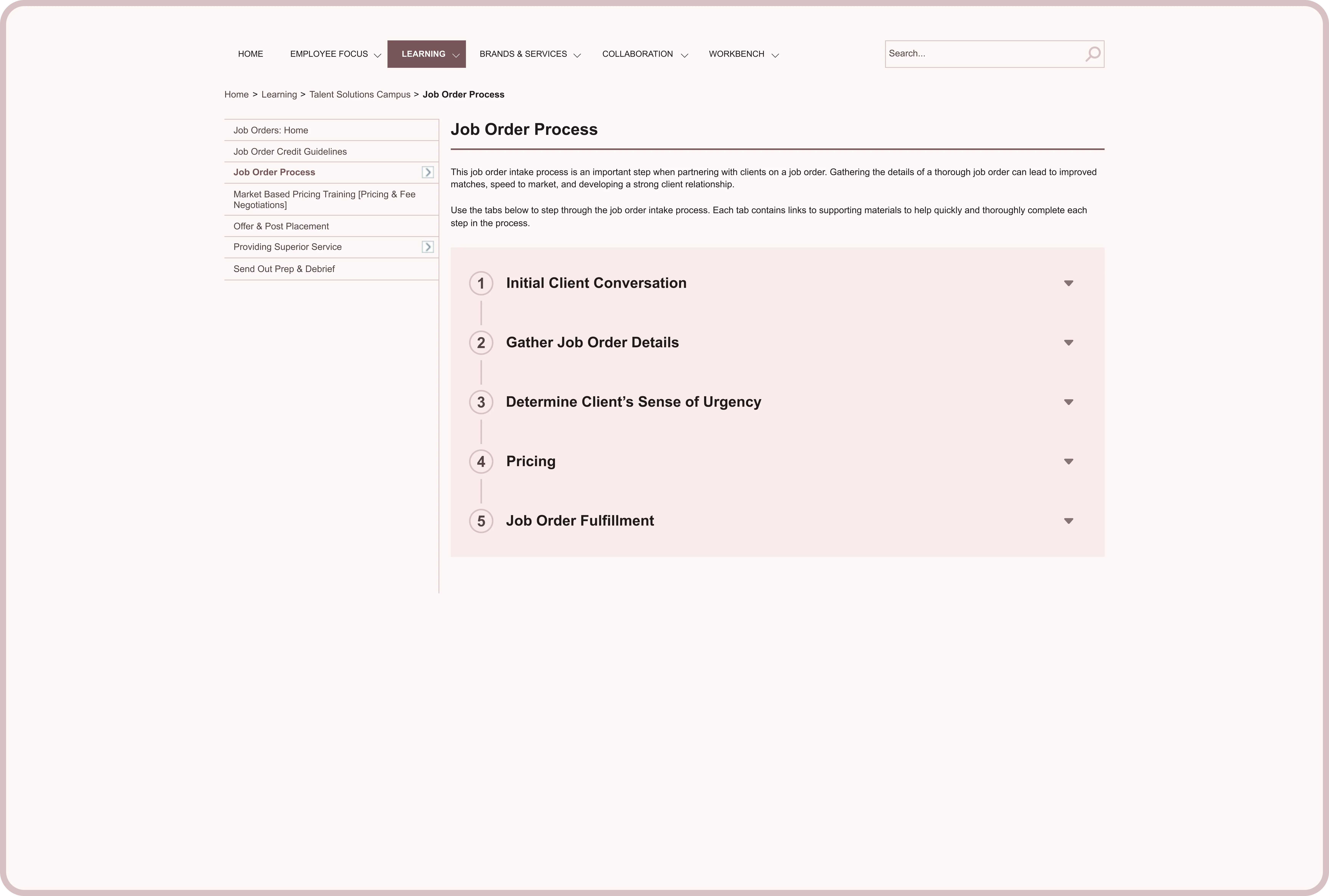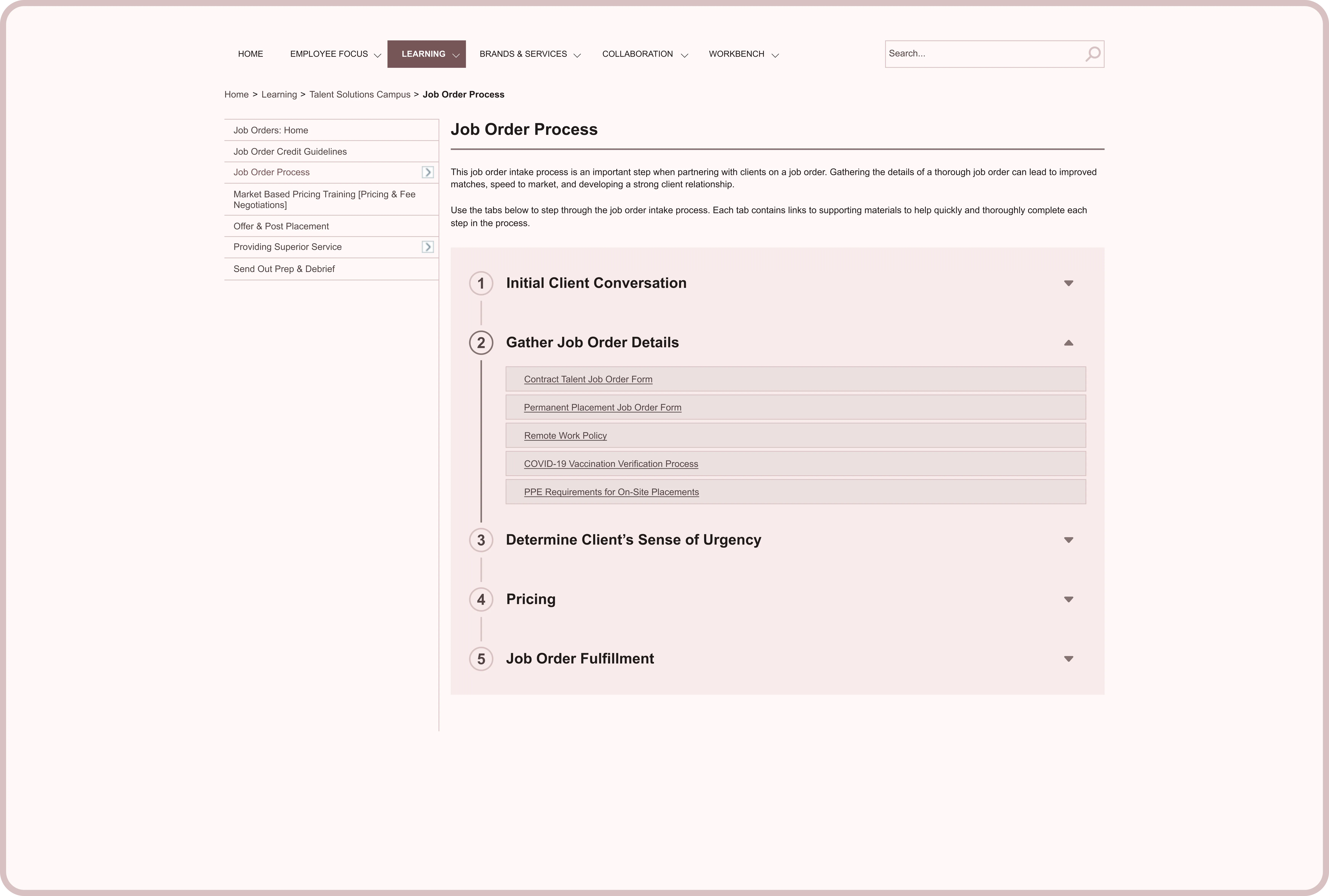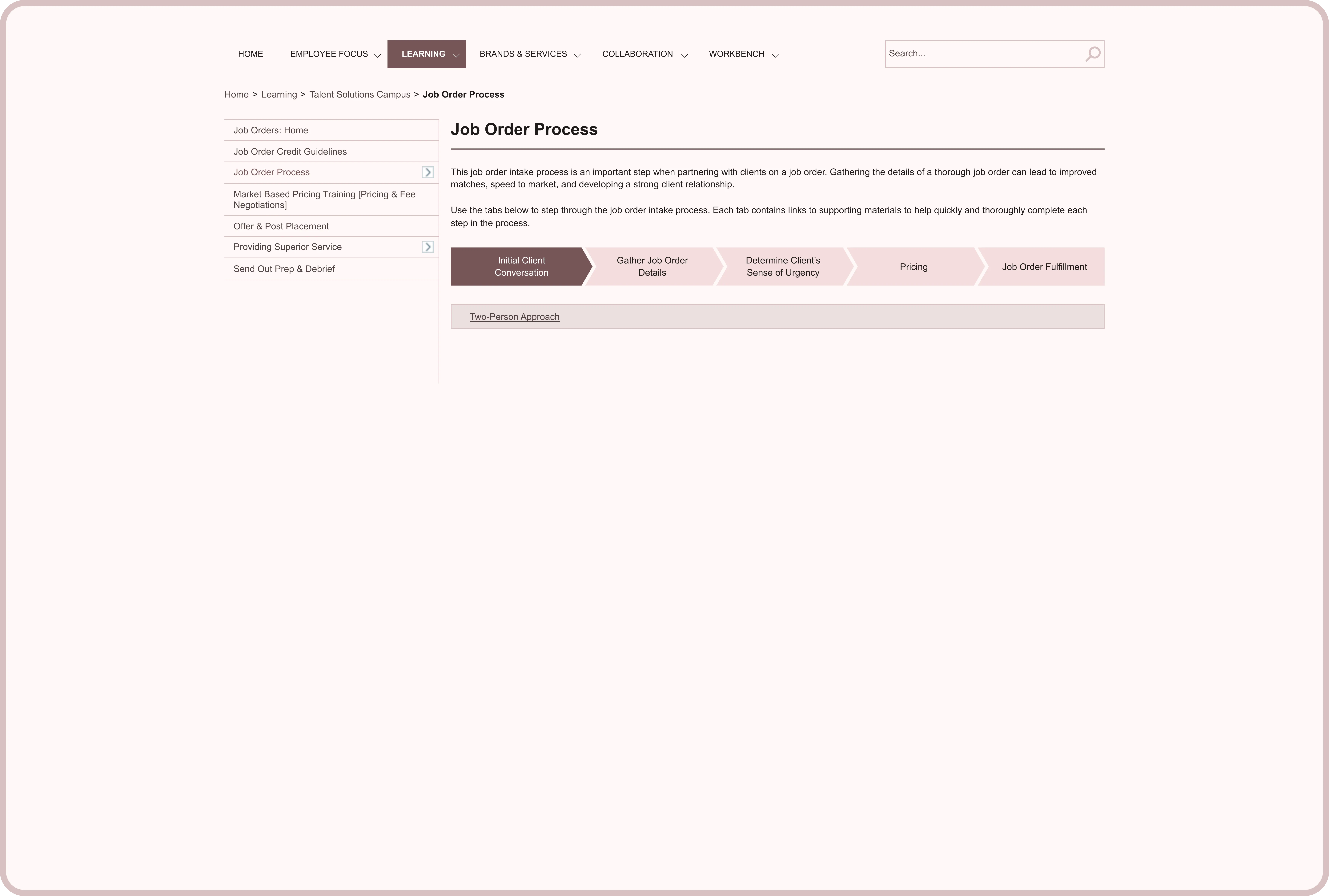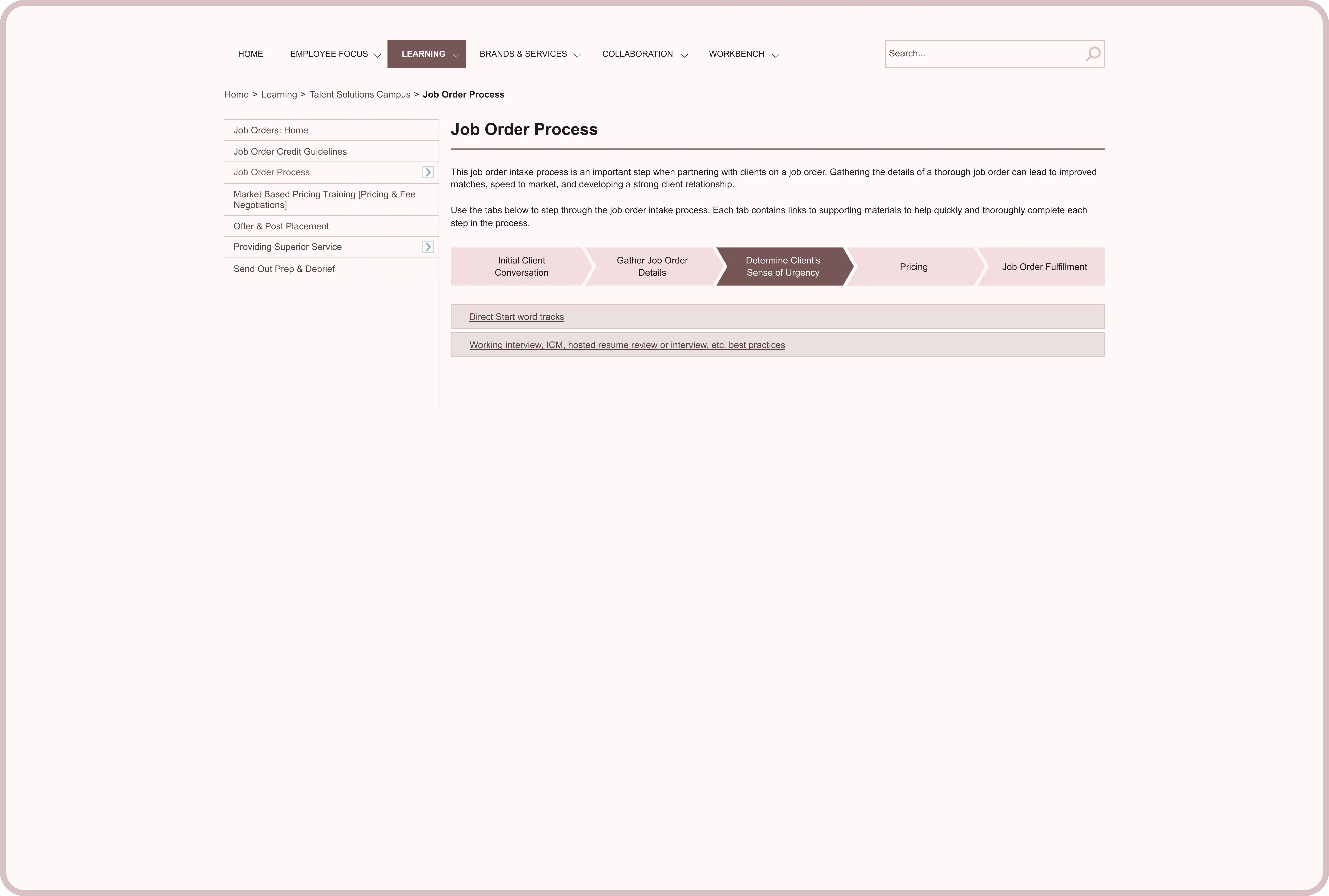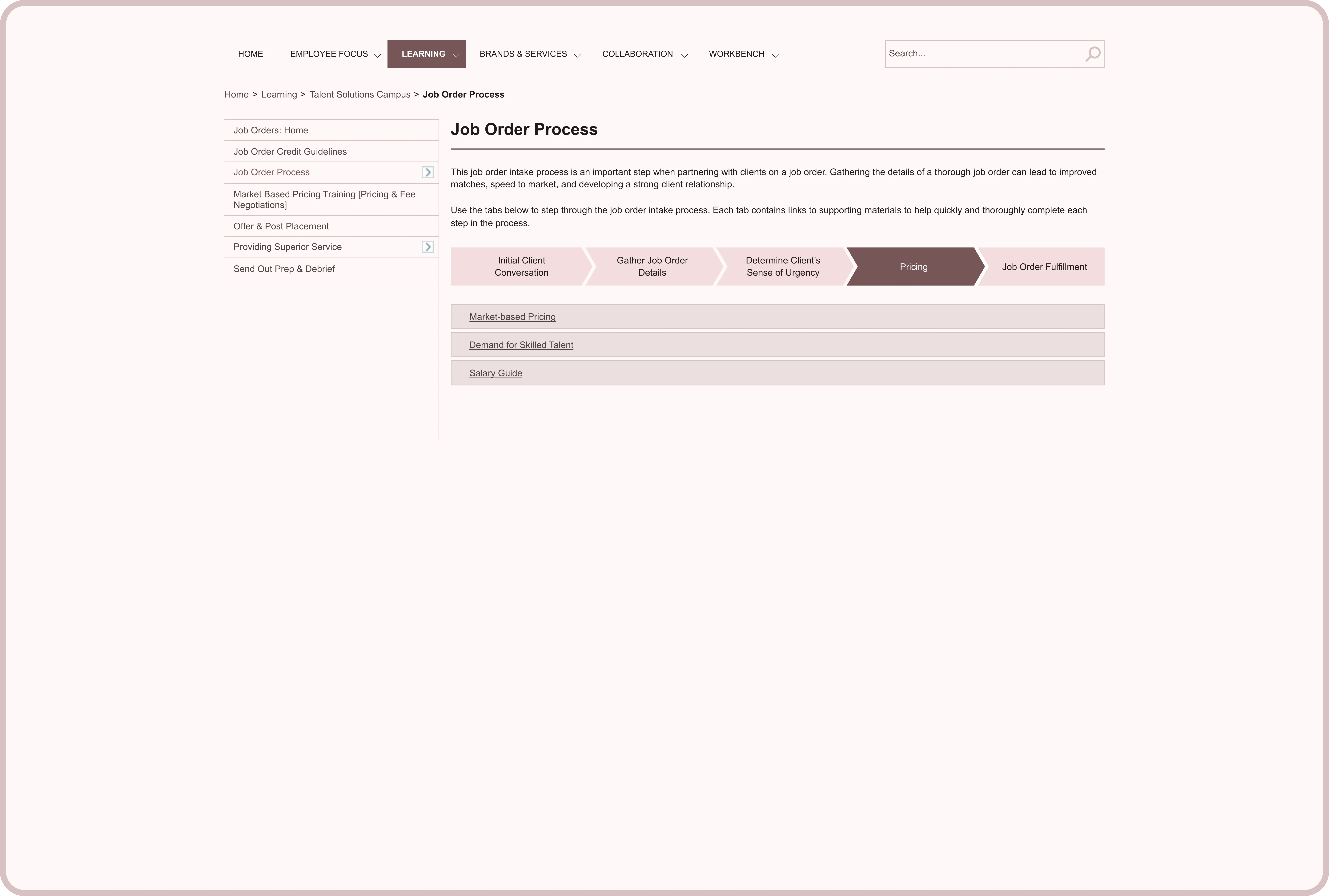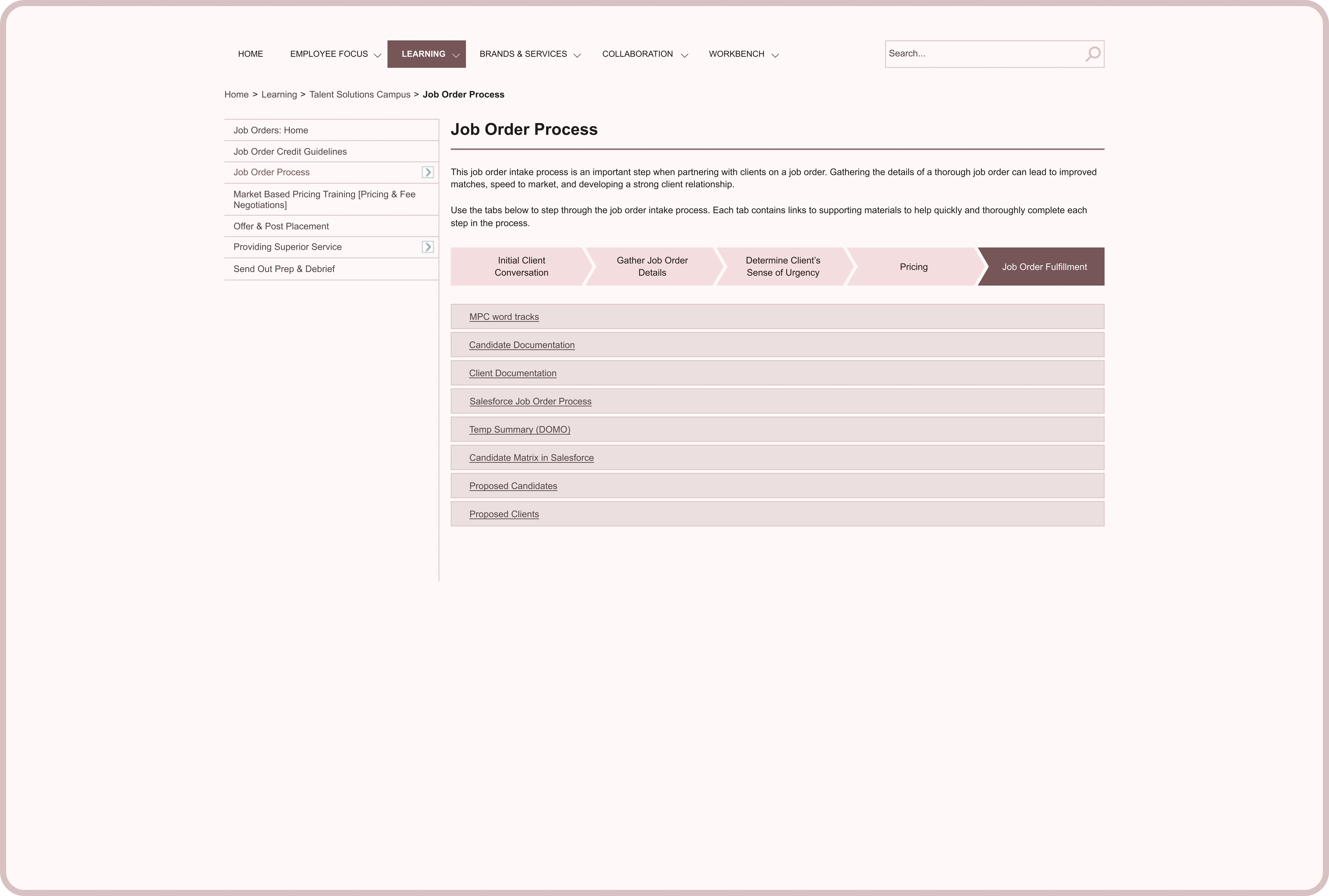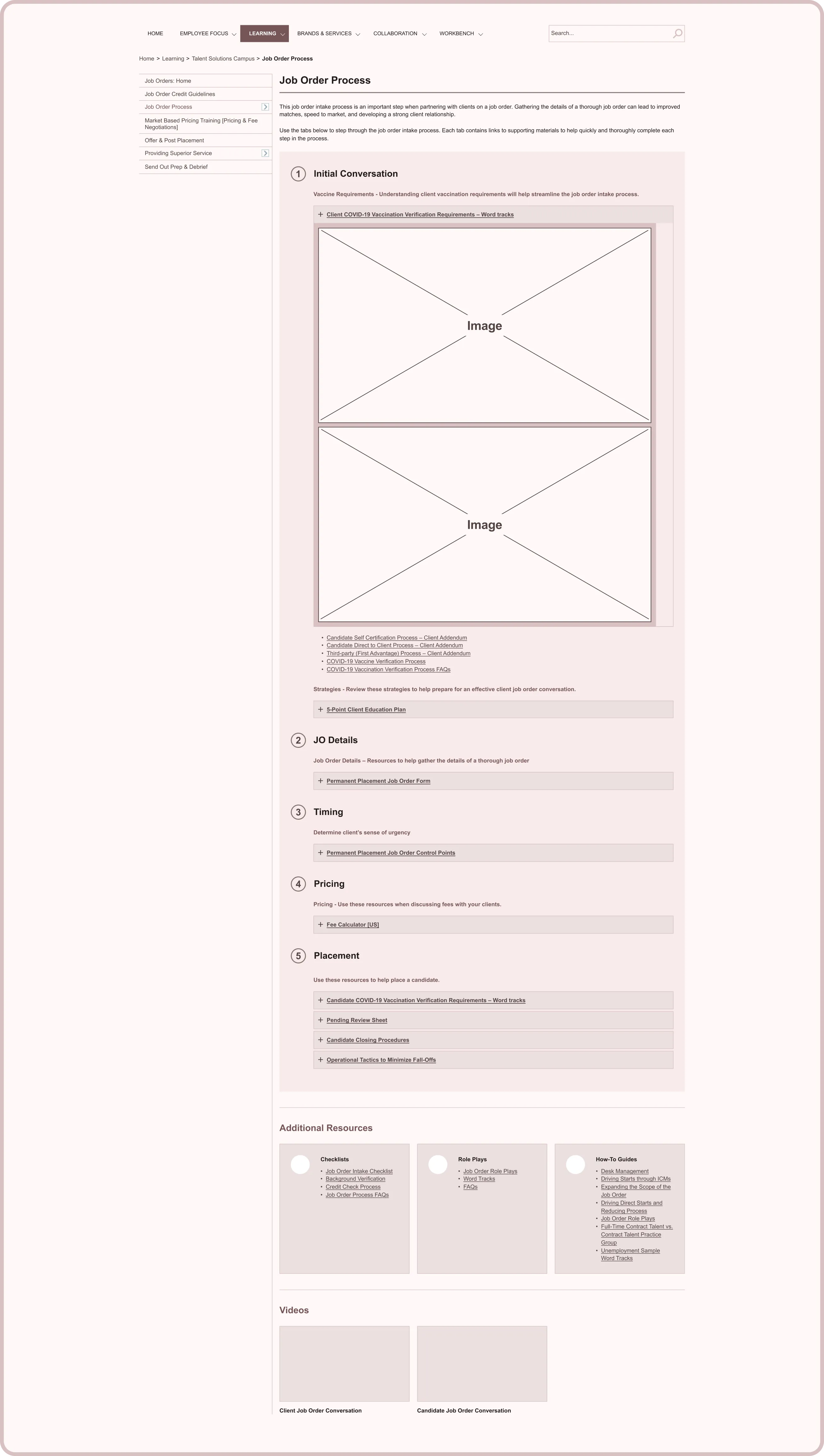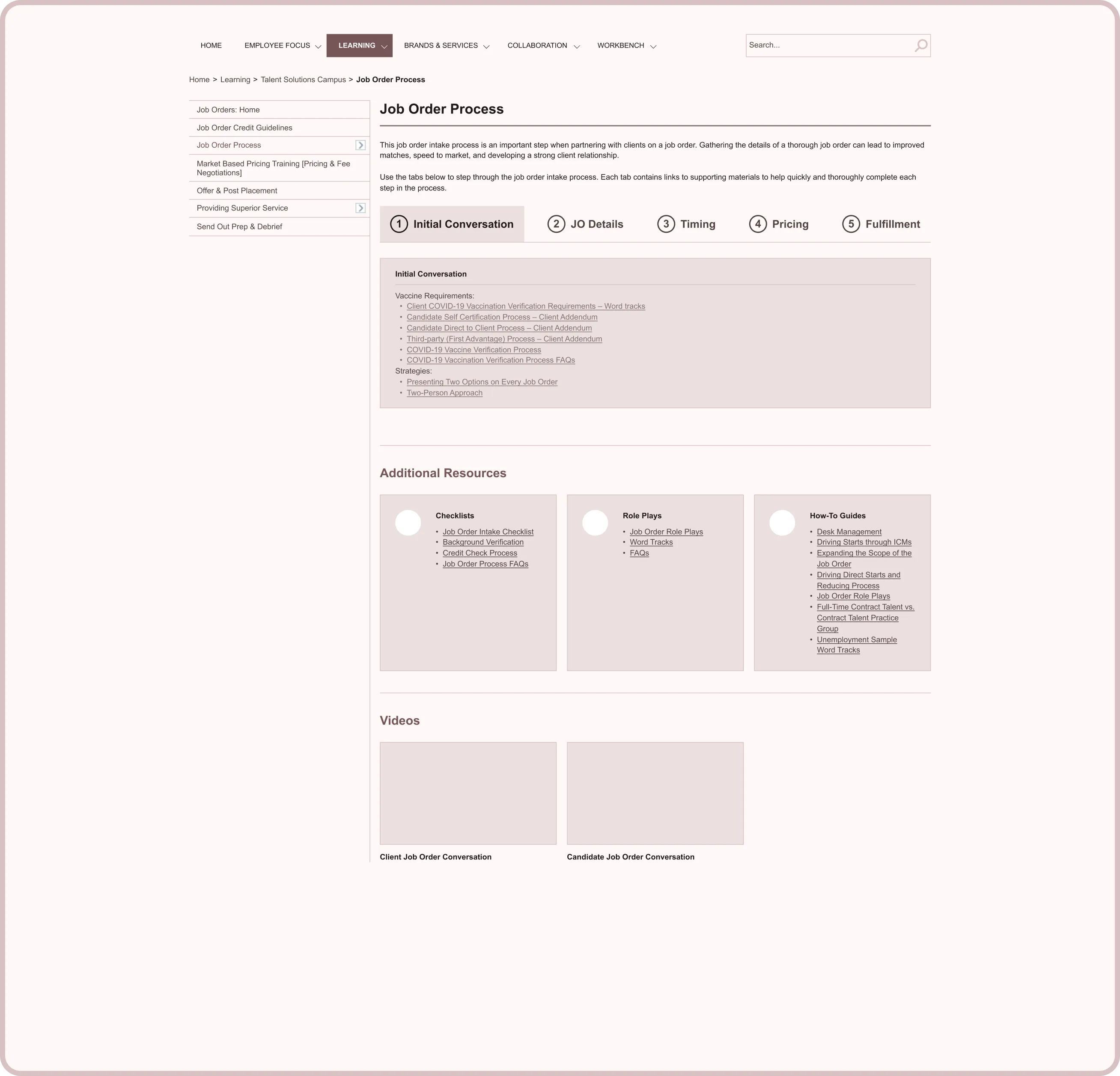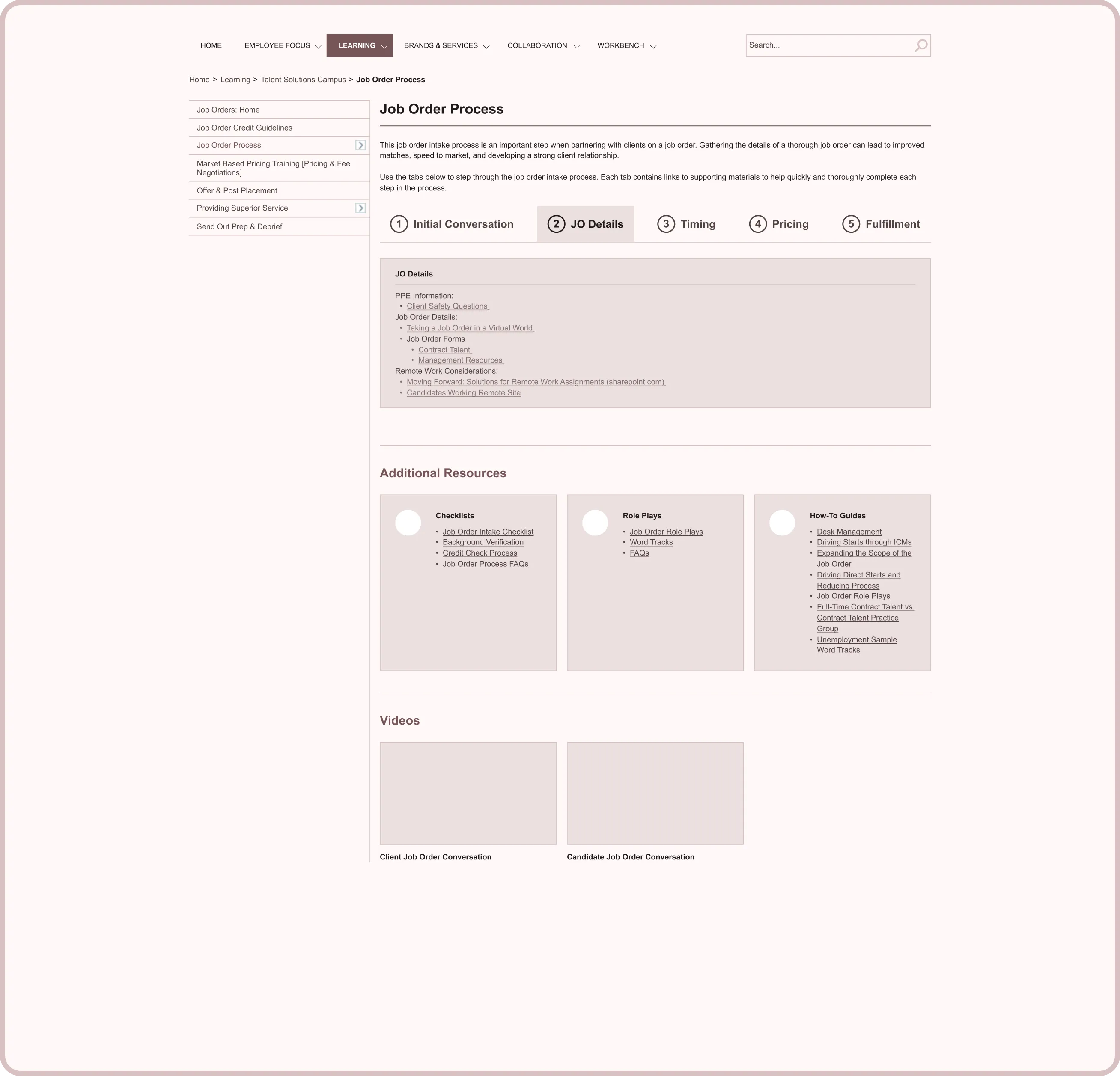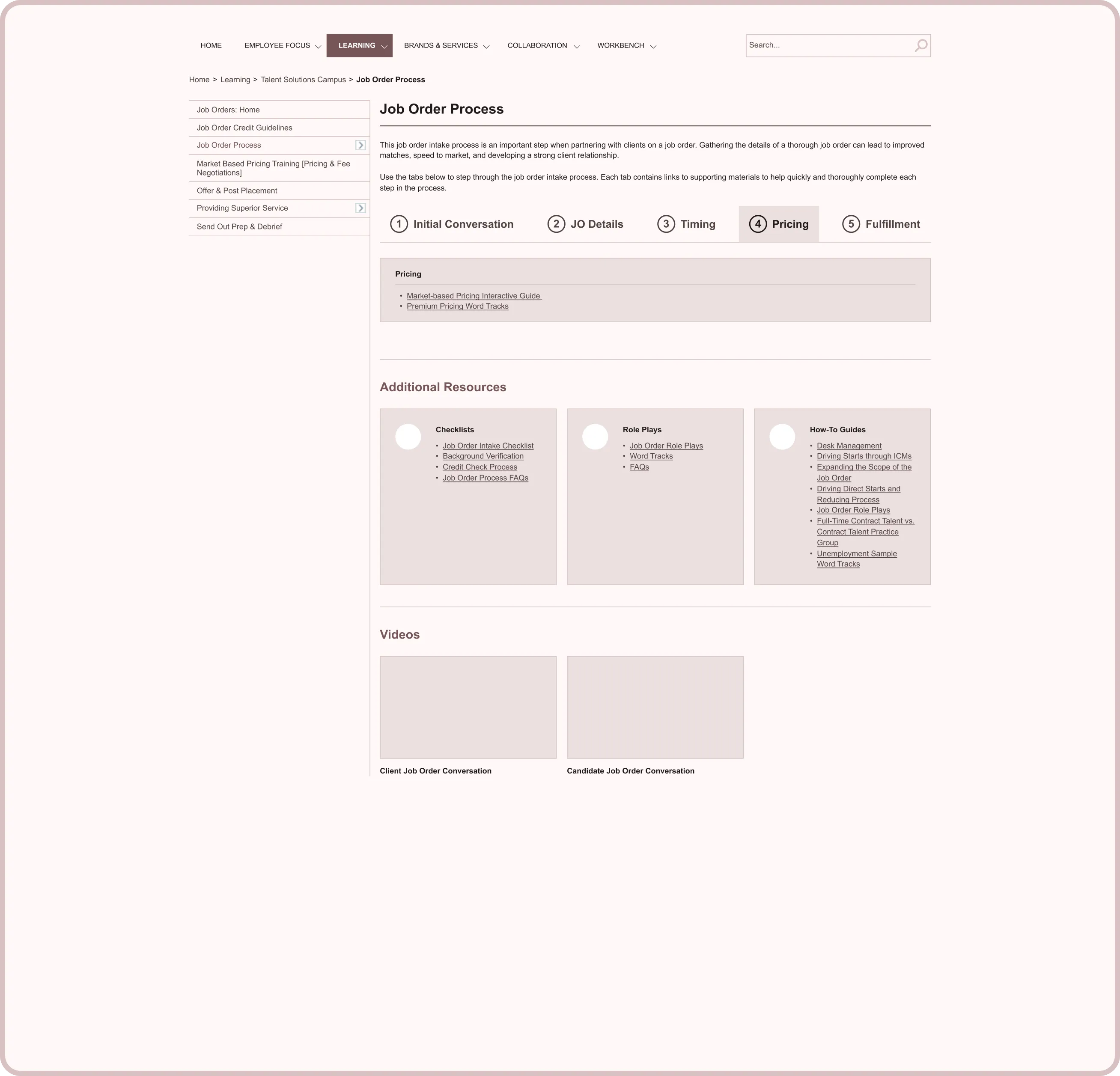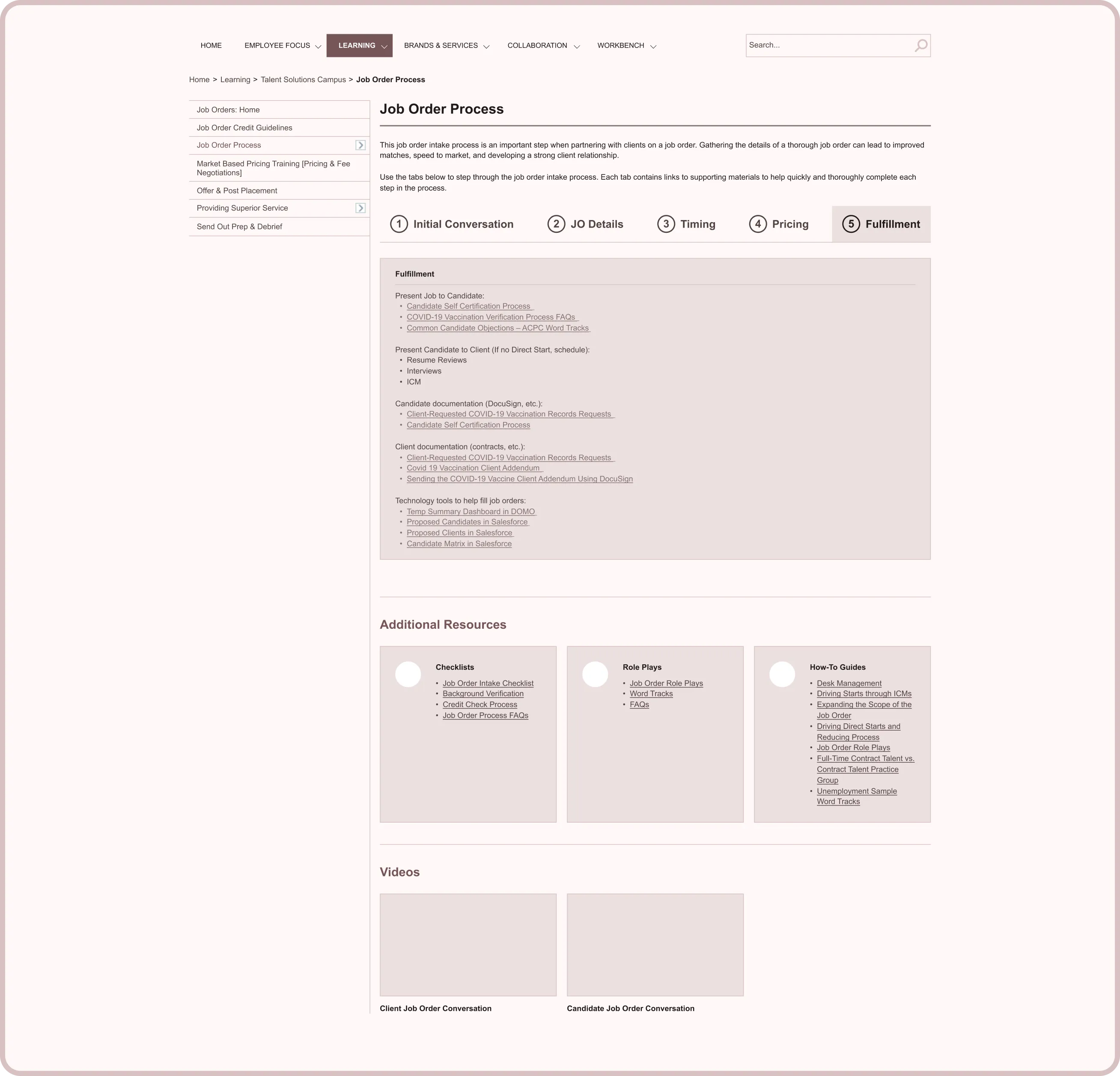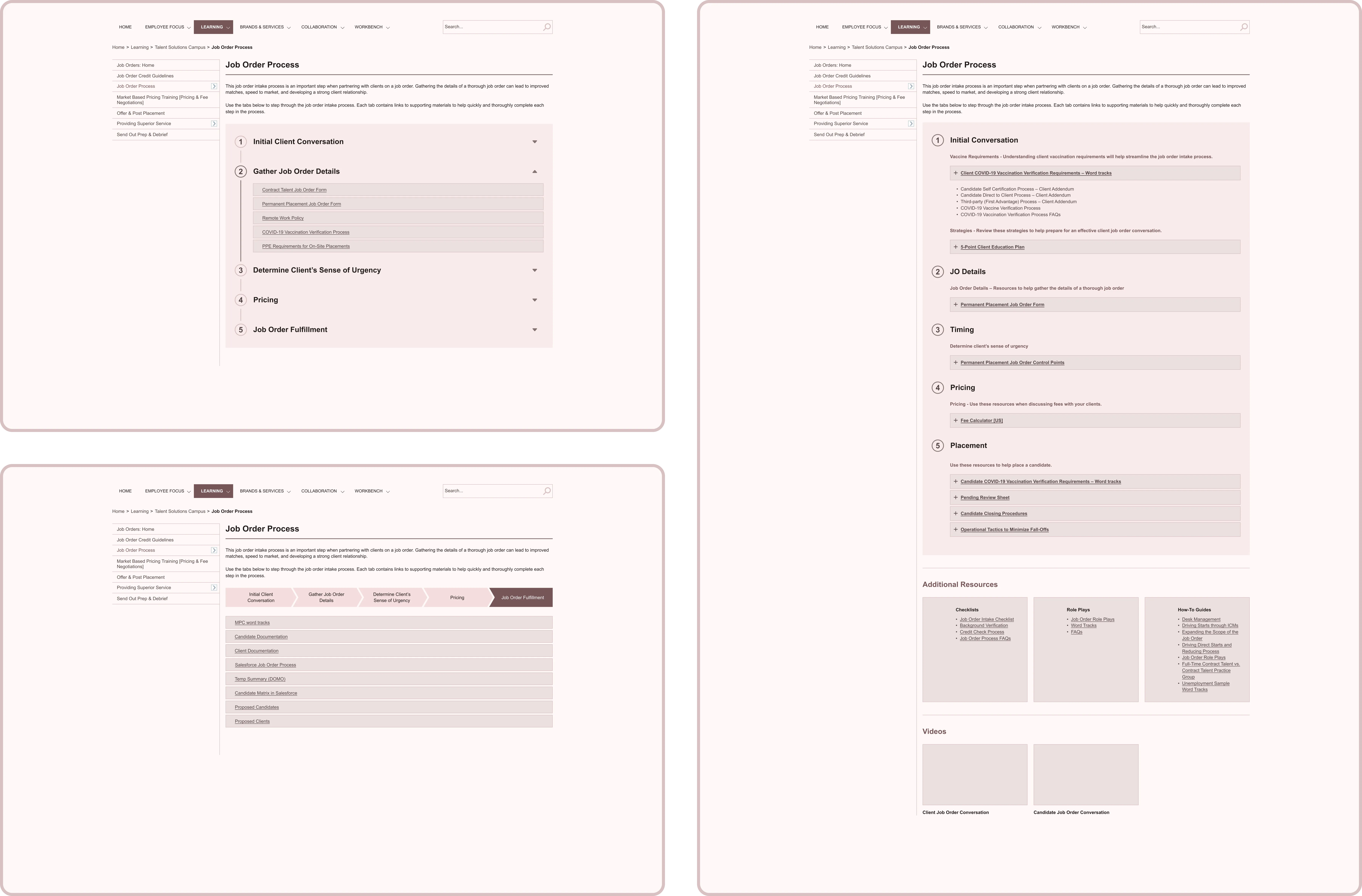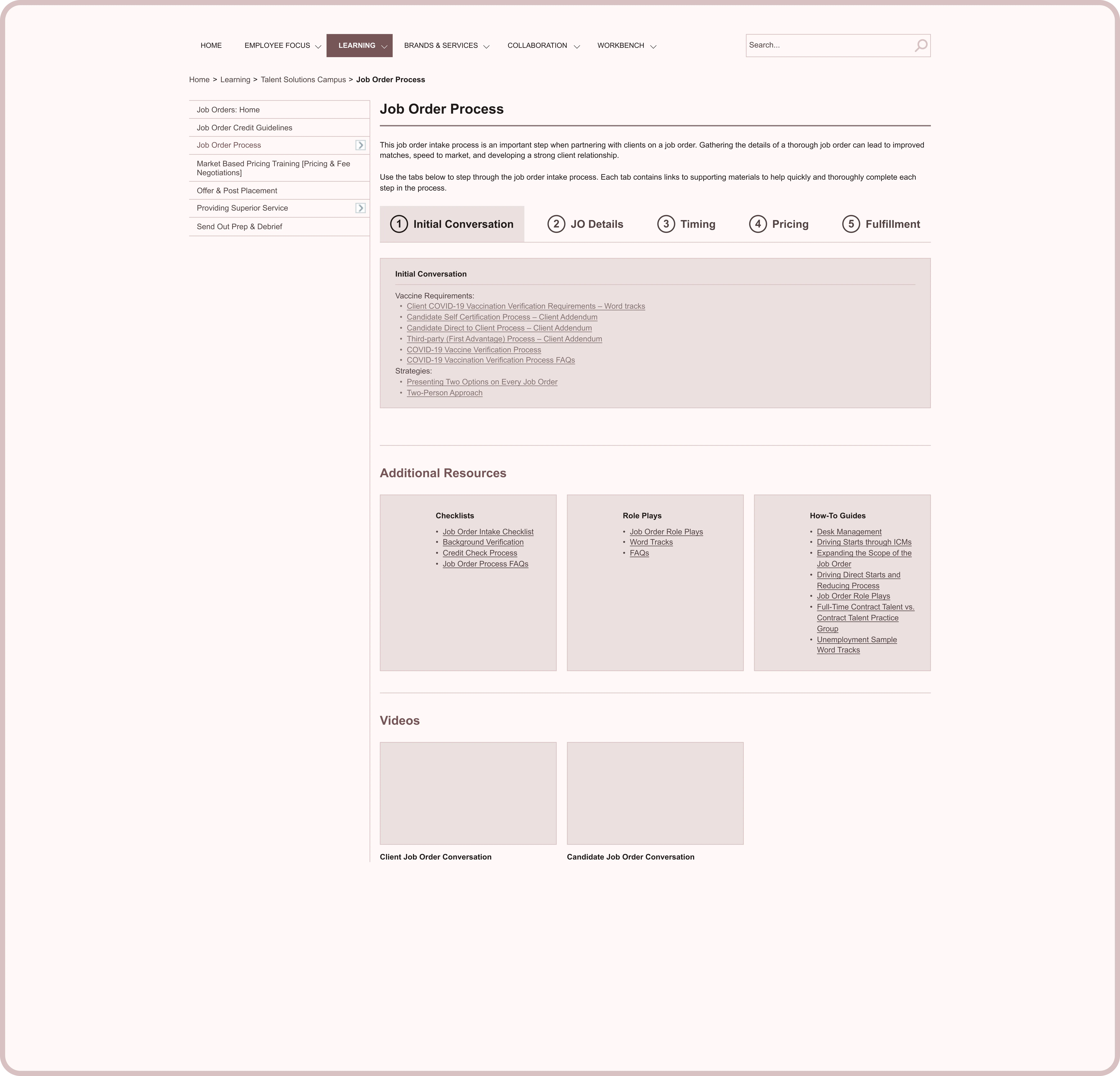Job Order Process
Unlocking Efficiency
Time as a Barrier
Alleviating the bottleneck
Creating job orders for clients was the primary responsibility for Robert Half's staffing professionals, and served as a cornerstone for the company's revenue generation. The existing process was tedious and decentralized, leading to delays that negatively impacted revenue.




Staffing Professionals
Primary Revenue Generators
Staffing Professionals play a critical role in generating revenue for Robert Half. However, the existing process's decentralized and inconsistent nature often leads to delays that impact their efficiency.
Straight from the source
A Time-Sensitive Turnaround
Unearthing the Problems
Initiated by the Executive Director team, this project was a critical focus, aimed at diagnosing and solving delays in the primary revenue driver—job order creation.
In collaboration with the research team, we conducted interviews with Staffing Professionals. The feedback highlighted issues of decentralization and poor findability.
Mapping Out the New Process
Before diving into the user stories, I mapped out the Information Architecture (IA), creating a clearer and more centralized framework that aimed to eliminate the existing bottlenecks.
Ideation
We pitted different lo-fi prototypes against each other to see which performed best.
Feedback Loop
User and Executive Director feedback led to several design iterations. The final design centralized the process, improved navigation, and optimized the number of user clicks and scrolls.
Build & QA Phase
Once the design got a thumbs-up, it was time to build. I worked closely with the engineer to ensure the final product mirrored my designs and participated in quality assurance before the launch.
Quantifiable Impact
Results
By focusing on user insights and iterative design, we achieved our key objectives—centralizing the process and slashing delays—ultimately bolstering Robert Half's main revenue stream.
